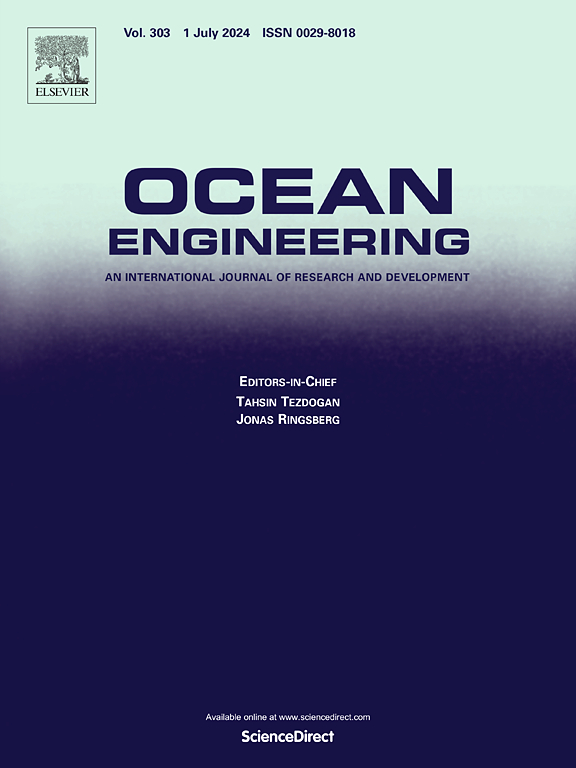Investigation of wave spectral climate at key location of the Northern South China sea using a novel modeling framework
IF 4.6
2区 工程技术
Q1 ENGINEERING, CIVIL
引用次数: 0
Abstract
Wave spectral climate explains the complexity of local marine environments. The dynamic variations of dominating wave components hamper wave spectral climate analysis, necessitating a precise modeling of climatic wave spectra. In this study, wave spectral datasets are constructed using WavewatchIII for the key location of the Northern South China Sea (NSCS-K). By the improved watershed algorithm, the datasets were classified into five distinct spectral classes, namely wind systems (ClassI), swell systems (ClassII), wind and swell systems (ClassIII), two swell systems (ClassIV), and complex multipeak systems (ClassV). The transformational patterns of wave systems in NSCS-K are revealed using a Markov chain approach. The main spectral class data are modeled by spectrum models. It is found that ClassI (64.80 %) and ClassIII (20.37 %) are the dominant ones in NSCS-K. In addition to the intra-spectral transformations that exceed 85 % in each class, the transformation from ClassI to ClassIII and ClassII to ClassIV deserves to be noticed, with a proportion of 6.66 % and 9.65 %, respectively. The JONSWAP spectrum model provides the most optimal applicability for ClassI, with γ typically between 1.8 and 2.2. For ClassIII, the Ochi-Hubble spectrum model achieves an accurate representation with λ1 mostly in 2.0–2.5 and λ2 mostly in 1.5–2.0.
求助全文
约1分钟内获得全文
求助全文
来源期刊

Ocean Engineering
工程技术-工程:大洋
CiteScore
7.30
自引率
34.00%
发文量
2379
审稿时长
8.1 months
期刊介绍:
Ocean Engineering provides a medium for the publication of original research and development work in the field of ocean engineering. Ocean Engineering seeks papers in the following topics.
 求助内容:
求助内容: 应助结果提醒方式:
应助结果提醒方式:


